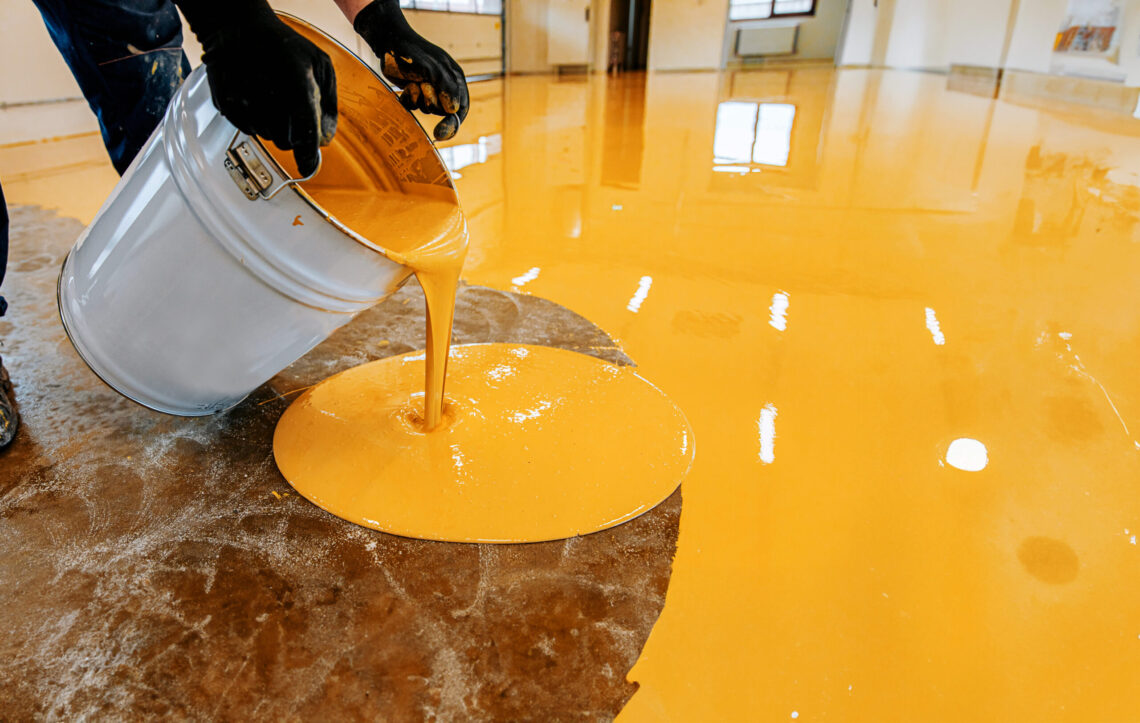How Do Epoxy Floor Coatings Work?
Exploring the vast world of floor finishes can lead you to a tough and durable option — epoxy coatings. Representing a blend of technology and aesthetics, epoxy coatings create a surface that’s not only attractive but also withstands the test of time and traffic. For individuals and businesses in need of a practical solution that offers both sturdiness and style, epoxy floors have proven to be a popular choice. In understanding how these coatings work, we delve into the science, application, and benefits that set them apart. Keep reading to discover the essentials of epoxy floor coating and how they could be the flooring solution you’ve been searching for.
Understanding Epoxy Coating and Its Chemistry

The unique properties of epoxy coatings can be attributed to their chemical makeup. Epoxy is essentially a thermosetting resin that is formed when you mix an epoxide resin with a polyamine hardener. The hardener acts as a catalyst and gives the epoxy its strength and durability once cured. Unlike traditional paint, epoxy creates a chemical bond with the surface it’s applied to, resulting in a long-lasting and resilient finish.
The chemical reaction that occurs during the mixing process transforms the liquid epoxy into a solid. This curing process is what gives epoxy its exceptional adhesive qualities. The end result is a glossy, impervious coating that resists a wide variety of substances, including water, chemicals, and oil, making it ideal for different environments, from residential garages to commercial warehouses.
Temperature plays a crucial role in the epoxy-curing process. The heat generated from the exothermic reaction speeds up the curing time, which makes it critical to use epoxy in a controlled environment. It is this understanding of the chemistry behind epoxy that predicates a successful application.
The Step-by-Step Application Process of Epoxy Floor Coatings

Applying an epoxy floor coating properly requires meticulous preparation. The initial step involves cleaning the concrete floor thoroughly, removing any dirt, oil, or previously applied coatings. This is followed by repairing any cracks or damages to create a smooth base. A crucial part of the preparation process is to acid etch or mechanically grind the surface to enhance the adhesion of the epoxy.
Once the surface is prepped, it’s time to mix the epoxy. This involves combining the resin and hardener according to the manufacturer’s instructions — a vital step to activate the epoxy’s properties. The mixture needs to be used within a specific timeframe before it starts to harden, referred to as its “pot life.”
Applying the mixed epoxy floor coating follows a strategic process to ensure even distribution. Starting from one corner, the epoxy is rolled onto the concrete in thin layers, often starting with a primer followed by the base coat. It is essential to maintain a wet edge to avoid overlap marks and to work swiftly yet meticulously to cover the entire surface before the epoxy starts to set.
After the base coat is down, additional layers or decorative chips can be added. It is critical to allow adequate drying time between each layer. Once the final coat is applied, the epoxy needs to dry completely, a process that may take several days, depending on the product and environmental conditions. During this time, it is important to keep the area free from traffic until the epoxy has fully cured.
The Key Benefits of Choosing Epoxy Floor Coatings for Your Space
Epoxy floor coatings offer an array of benefits, making them a preferred choice for various flooring needs. With unmatched durability, these coatings can withstand high-impact traffic, which is ideal for garages, industrial areas, and commercial buildings. Their resistance to stains, chemical spills, and heavy loads ensures the floor remains in pristine condition over long periods.
Apart from their unrivaled strength, aesthetics play a role in the widespread use of epoxy floors. Available in an assortment of colors and finishes, including metallic or flake designs, epoxy can transform a plain concrete floor into an elegant and visually appealing surface. This flexibility makes epoxy a suitable flooring option for not only functional spaces but also in places where style is key.
Another considerable benefit is the ease of maintenance that comes with epoxy floors. The seamless nature of the coating eliminates areas where dirt could collect, making cleaning a breeze. Regular sweeping and occasional mopping with mild detergent is all that’s required to keep the floor looking new. Moreover, the glossy surface of epoxy is light reflective, brightening up spaces and potentially reducing the need for additional lighting.
Overall, the advantages of epoxy floor coatings are clear, combining functionality with finesse to provide a high-performance flooring solution. With the correct application, troubleshooting practices, and maintenance, a coated floor can serve as a durable, cost-effective, and striking option for various settings.




